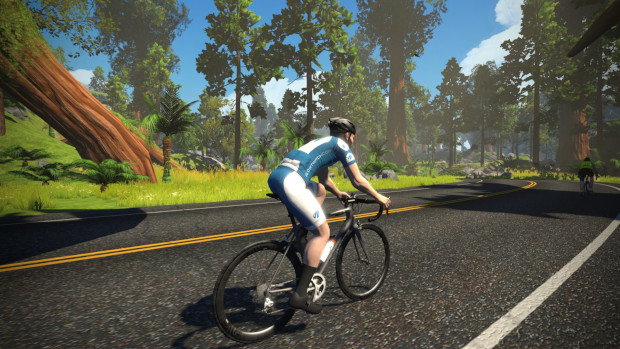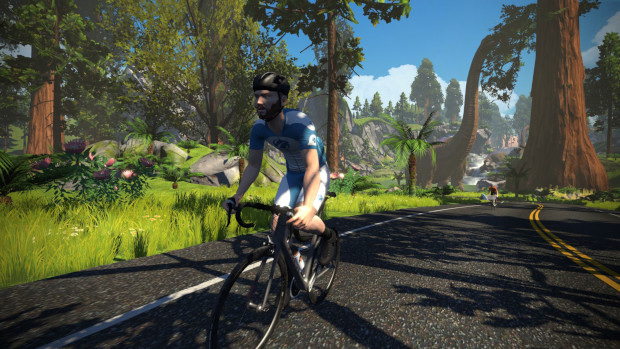Virtual Racing Today: Ironman and Others
We are losing more than we’re winning because of this pandemic, and one thing we lost is our ability to congregate with others. The Good Book says, “For where two or three gather in my name, there am I with them.” My governor, Gavin Newsom, says, “For where two or three gather, a state trooper with an open ticket book is with them.”
That doesn’t mean we can’t run or ride outside. California’s stay-at-home executive order is quite different here than those in Mediterranean European countries. Californians can run and cycle for recreation or fitness outdoors, as long as you and I ride or run solo. That said, most folks are doing their riding indoors. Among Slowtwitchers, 97 percent are still training and 90 percent still cycling. Just, only 27 percent of Slowtwitchers are doing their cycling outdoors. The rest of us are on trainers. This is causing race organizers, timing companies, and others to eye virtual events.

A consequence of this is the rush toward stationary products and platforms that allow you to cycle, row, swim or run in place. Let’s talk about the stationary landscape, and the virtual landscape, and these are not synonymous. I’ll devote most of what I write to Ironman today, but Ironman is only one part of the virtual racing landscape. I’ll write about others in future installments, as the virtual racing scene (in bike, run, and tri) develops.
Slowtwitch hosts 4 virtual group runs each week; and 4 virtual cycling events, which are a combo of structured training events and group rides. These all take place on the Zwift platform. We intend to repurpose some of these events into occasional races: perhaps 1 or 2 footraces a month, and 1 or 2 cycling races a month. We’ll keep you updated on our intentions here.
We’ll host a curated thread on virtual racing on our Reader Forum, and in that thread’s first post we’ll place a wiki calendar that we maintain. We’re talking to a lot of stakeholders now, to find out what they want to do as regards the virtual race landscape. Below is what cycling in Zwift looks like.
Forms of Virtual Eventing
In broad strokes, there are two kinds of virtual event “timing companies” out there right now. The first is the stationary platform. Zwift, let us say. Platforms like this – which include Virtugo, RGT and others – are “multiplayer” platforms. What is “multiplayer?” You and I can ride or race side-by-side; all our avatars are on the screen together; they all represent real riders or runners; and our avatars don’t need to honor social distance. Multiplayer is where it’s at; it’s always been where it’s at; it is just easier to appreciate it now, in the age of COVID, because it represents the only opportunity for us all to congregate in groups.
What do I mean by saying Zwift is a “timing company.” When we race, we need someone to keep track of our times. When we Zwift, Zwift keeps track of our times. We then simply need a way to aggregate and sort the times, that is, to sort them into results, so, we need a “results” company too.
Garmin and Wahoo are also “timing” companies. Let’s take a STRAVA Challenge as an example. Who times this event? Your Garmin 1030 or your Wahoo ELEMNT ROAM. If it’s a run, your Garmin 945 times it or, failing that, your Stryd Footpod. STRAVA takes the times and delivers “results.”
So, virtual racing can take place either indoor or outdoor. A STRAVA Challenge is an outdoor virtual event. A Zwift race is a stationary virtual event.
IRONMAN VR
Ironman just announced what will be its suite of virtual events: IRONMAN VC (Virtual Club); IRONMMAN VR (Virtual Racing); IRONMAN VR Pro Challenge. There’s a platform. Not yet linked to. Not yet public. Scant details. The only thing we do know is that Ironman is going to hold events (races) on weekends – like they always do – but it appears you can achieve efforts on your own at any time during the weekend. The results of some of these weekend races will generate slots for November’s 70.3 World Championships. There will be both an age-group and a pro component. The pros will race head-to-head, and the “IRONMAN VR Pro Challenge” will debut on April 4th.
Another publication wrote that, “Ironman Virtual Club will be via Ironman’s own proprietary app and web-based platform, which they have been developing for some time but accelerated given the latest news. (It will not simply piggyback on existing virtual training platforms, but will compete with them.)”
I don’t want to read more into this than the author intends. Just, Ironman produced a video (below) that accompanies its announcement with Ironman’s pros all running on treadmills and cycling in stationary trainers. The picture this painted in my brain is of Ironman launching a stationary platform, i.e., something like Zwift or Rouvy. I could be wrong, but I doubt this is what Ironman has in mind by a “virtual training platform.”
In this video Ironman’s CEO Andrew Messick said that, “athletes will submit the data from their connected devices into the platform,” as he seems to be pointing to a smart watch on his wrist. This suggests, to me, that there might be some stationary multiplayer racing by a subset of athletes (i.e., pros), but age-group athletes could submit results from GPS devices. If so, then racing a virtual 70.3 might be an indoor virtual event, as well as an outdoor virtual event, though it is my guess that for the pros it is more likely to be an indoor-only virtual event.
Can I take a wild guess? We’ve written a fair bit about the Czech stationary cycling platform called Rouvy. This has always been the sort of platform uniquely well suited for a certain Ironman-specific task. On Rouvy, one could build the exact Nice 70.3 World Championship bike course. Further, you could host a virtual race on that course, because Rouvy is a unique portmanteau of graphic avatars – cyclists – overlaid onto a real video. Let’s say that Nice bike course is available to all entrants in a World Championship event like the one held in Nice. The contestants who take the opportunity to pre-ride the course on Rouvy would be better prepared for what awaits them.
The head-to-head competition among Ironman’s pros will be broadcast on Facebook Watch. I could imagine Ironman partnering with Rouvy for the cycling portion at least. Then to the treadmill for the run. Perhaps a camera filming a pair of athletes, that view inset into a Rouvy screen using a third-party app. The IRONMAN VR Pro Challenge will debut on April 4 and we’ll know if I’ve talked myself into a far-afield fiction. Below is what riding in Rouvy looks like:
As for you and me, I would imagine there’s a number of ways we could accomplish our rides and runs, either on a treadmill or on the road, based on the tech we have at hand (smart trainers, treadmills, or GPS devices). How would we perform a virtual swim? Beats me. Yes, there’s VASA, and maybe that’s a component of the IRONMAN VR Pro Challenge. (Spoiler prediction: Lionel is the king of the Pain Cave; he’s going to own the IRONMAN VR Pro Challenge.)
I absolutely could imagine Ironman creating a data aggregation and sorting tool that is unique to them, and they already have a first-class “race result” display and have had for more than a decade.
Accountability
Are you watching I Love Lucy reruns in a Barcalounger while your “treadmill” runs a 5k in 14:30? There are 3 different ways I could do that on mine: the Runn app installed on it; the factory Bluetooth signal my treadmill emits; and the hack I installed into the mill’s CSAFE port that also emits a BLE signal. But I don’t worry much about this, because if my treadmill runs a 14:30 5k at some point this pandemic will be over, and when it becomes apparent that nothing in my results before or after the pandemic indicate an ability to run that 5k, I’ll have been found out, and there will be consequences for me to pay.
The closest method by which we stop a cheat is to mandate a footpod, preferably a Stryd, when running. But it limits participation in a race if everyone has to have that device. There will be a lot of whinging about cheating as we move toward a virtual racing paradigm. I will pay little attention to it. May I close as I opened, with another piece of sage advice from the Good Book? “Sufficient unto the day is the evil thereof,” which retranslated is: Don’t you have better things to worry about?




